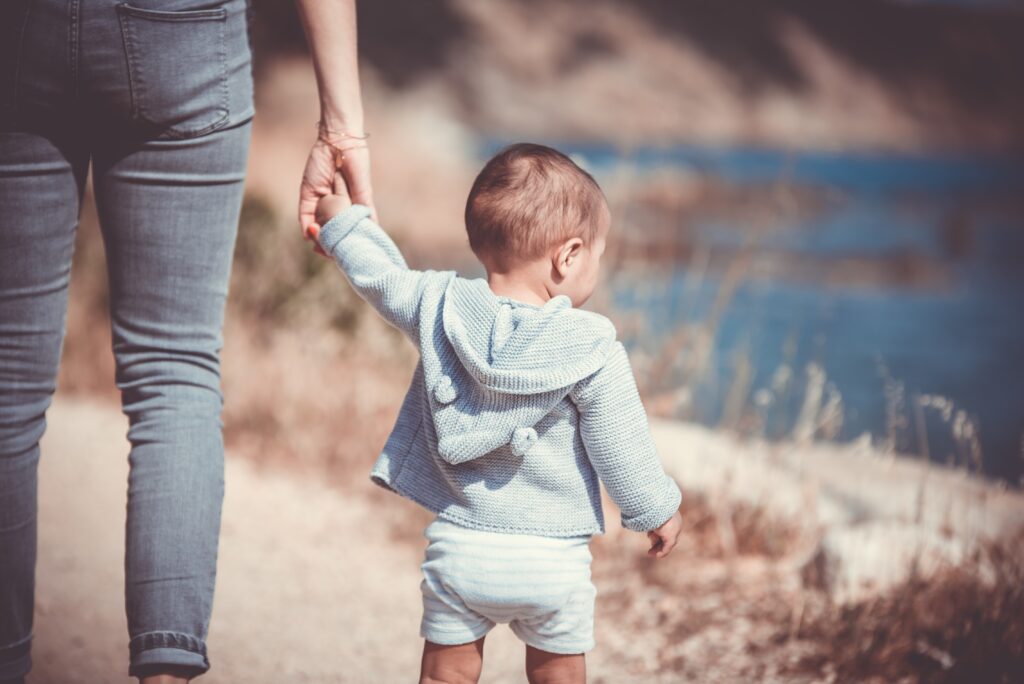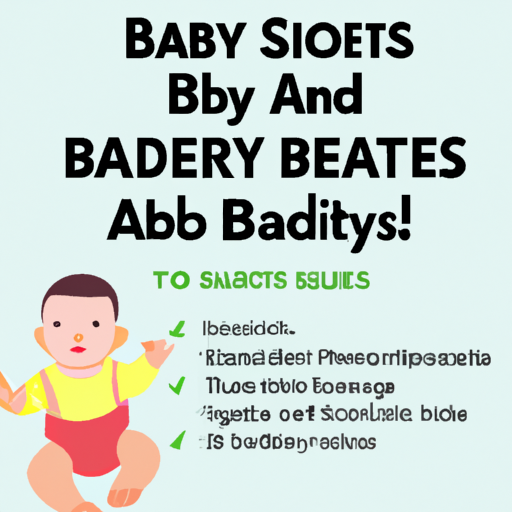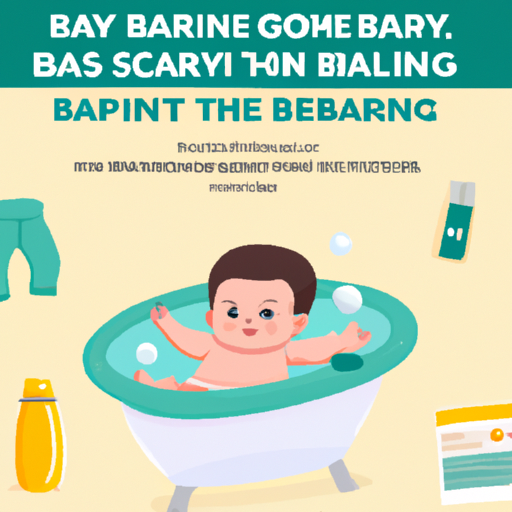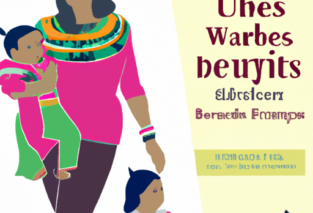In this article, we will be exploring the topic of baby safety essentials and why they are important to keep your little one safe and sound. Throughout this guide, you will learn about the must-have safety items for your baby, from baby gates to outlet covers, and how to use them effectively. We will also discuss tips and advice on creating a safe environment for your baby, both at home and on the go. So, if you want to ensure your baby’s safety and peace of mind, keep reading to discover all the essential safety measures you need to implement.

Why Baby Safety is Important
Ensuring the safety of your baby is of utmost importance. Babies are naturally curious and unaware of potential dangers around them. As a parent or guardian, it is your responsibility to prevent accidents, create a safe environment, and protect the overall well-being of your child.
Preventing Accidents
Accidents can happen in the blink of an eye, especially when it comes to babies. By taking the necessary precautions, you can significantly reduce the risk of accidents occurring. Simple measures such as keeping small objects out of reach, removing toxic substances, and installing safety gates can go a long way in preventing accidents.
Creating a Safe Environment
Creating a safe environment for your baby is essential to their overall well-being. This includes baby-proofing your home, securing furniture and appliances, covering electrical outlets, and ensuring water safety. By taking these steps, you can minimize the potential dangers that your baby may encounter.
Protecting the Well-being of Your Child
Above all, ensuring the safety of your baby is about protecting their overall well-being. By implementing safety measures, you are safeguarding your baby’s physical and emotional health. This is an ongoing commitment that requires vigilance, education, and proactive measures.
Preparing Your Home for a Baby
Preparing your home for the arrival of a baby is an exciting and important task. Making sure that your home is safe and baby-friendly is vital for your little one’s well-being. Here are some essential tips for baby-proofing your home:
Baby-Proofing Basics
Start by identifying potential hazards in your home. Common hazards include sharp edges on furniture, access to dangerous chemicals or medications, and dangling cords. Addressing these hazards will help create a safer environment for your baby.
Securing Furniture and Appliances
One of the most important steps in baby-proofing your home is securing furniture and appliances. Heavy furniture and appliances can pose a significant risk, especially if they are not properly secured. Use furniture straps or anchors to prevent top-heavy furniture from falling over.
Covering Electrical Outlets
Electrical outlets can be extremely dangerous for curious little explorers. Use outlet covers or plug protectors to keep your baby from inserting their fingers or objects into the outlets. This simple step can prevent electrical shocks and burns.
Installing Safety Gates
Installing safety gates will help prevent your baby from accessing areas of the house that may pose a risk. Use safety gates at the top and bottom of stairs, as well as in doorways to restrict access to certain areas.
Ensuring Water Safety
Water safety is crucial when it comes to babies and young children. Never leave your baby unattended in the bath, even for a brief moment. Use non-slip mats or cushions to prevent slips and falls, and always ensure that the water temperature is suitable for your baby’s delicate skin.

Safe Sleeping Practices for Babies
Babies spend a significant amount of time sleeping, so creating a safe sleep environment is essential. By following these guidelines, you can provide a safe sleeping space for your little one:
Choosing a Safe Crib
When it comes to choosing a crib, safety should be your top priority. Look for cribs that meet current safety standards and have adjustable mattress heights. Ensure that the slats are spaced apart correctly to prevent your baby’s head or body from getting stuck.
Using a Firm Mattress
A firm mattress is crucial for your baby’s safety during sleep. Soft surfaces, such as pillows or fluffy mattresses, can increase the risk of suffocation or Sudden Infant Death Syndrome (SIDS). Choose a mattress that fits snugly into the crib and avoid using additional padding or blankets.
Avoiding Loose Bedding
Loose bedding, including blankets, pillows, and stuffed animals, can pose a suffocation risk for babies. Instead of using loose bedding, opt for a sleep sack or wearable blanket to keep your baby warm and cozy without the risk of suffocation.
Positioning for Back Sleeping
The American Academy of Pediatrics recommends that babies sleep on their backs to reduce the risk of SIDS. Place your baby in their crib on their back, ensuring that their head and face remain clear of any obstructions. Avoid using sleep positioners or wedges, as they can increase the risk of suffocation.
Safe Feeding Practices for Babies
Feeding your baby is a special bonding experience, but it’s important to prioritize safety during meal times. Follow these guidelines to ensure safe feeding practices for your little one:
Choosing Safe Bottles and Nipples
When selecting bottles and nipples, choose ones that are BPA-free and made from safe materials. Check for any signs of wear or damage before each use and replace them as necessary. Ensure that the bottles and nipples are properly sterilized to prevent any contamination.
Safe Temperature for Bottle Feeding
Before feeding your baby a bottle, always check the temperature of the milk or formula. The liquid should be lukewarm, not too hot or too cold. Test the temperature by placing a few drops on the inside of your wrist to ensure it is comfortable for your baby.
Avoiding Choking Hazards
Choking hazards are a serious concern when it comes to feeding babies. Cut food into small, manageable pieces to reduce the risk of choking. Avoid feeding your baby small, hard foods like nuts or grapes, as they can easily become lodged in the throat.
Preventing Food Allergies
Introducing solid foods to your baby can be an exciting milestone, but it’s crucial to be mindful of potential food allergies. Introduce new foods one at a time, waiting a few days before introducing another. This will help you identify any potential allergies or reactions your baby may have.

Safe Bath Time for Babies
Bathing your baby is not only a necessary part of their routine but also a time for bonding and relaxation. To ensure a safe bath time experience, follow these tips:
Ensuring Water Temperature
Before placing your baby in the bath, always check the water temperature to prevent burns or scalds. The ideal water temperature for babies is around 100°F (37.8°C). Use a bath thermometer to ensure the water is at a safe and comfortable temperature.
Using Non-Slip Mats or Cushions
Slips and falls can happen easily in the bath, so it’s important to create a non-slip surface for your baby. Use non-slip mats or cushions in the bath to provide stability and prevent accidents. Always hold onto your baby and provide support throughout the bath.
Supporting the Baby in the Bath
Never leave your baby unattended in the bath, even for a brief moment. Always keep a hand on your baby to ensure they remain safe and supported. Use a baby bath seat or a support sponge to help keep your baby in an upright position while in the bath.
Never Leaving the Baby Unattended
It cannot be emphasized enough how crucial it is to never leave your baby unattended in the bath. A baby can drown in just a few inches of water in a matter of seconds. Stay within arm’s reach of your baby at all times during bath time.
Safe Traveling with Your Baby
Whether you’re going for a short drive or a long trip, it’s important to prioritize safety when traveling with your baby. Here are some essential tips for safe traveling:
Choosing a Safe Car Seat
Investing in a reliable and age-appropriate car seat is vital for your baby’s safety. Choose a car seat that meets safety standards, is suitable for your baby’s weight and height, and is installed correctly in your vehicle. Ensure that the car seat is rear-facing for infants and young toddlers.
Properly Installing Car Seat
Proper installation of the car seat is crucial for your baby’s safety while traveling. Follow the manufacturer’s instructions carefully and make sure the car seat is securely fastened. If you’re unsure about the installation, seek help from a certified car seat technician.
Ensuring Proper Buckling
Buckling your baby correctly in the car seat is essential. Ensure that the harness straps are snug and secure, with the chest clip positioned at armpit level. Avoid using bulky clothing or blankets that can interfere with the proper fit of the harness.
Avoiding Leaving Baby in Hot Cars
Never leave your baby unattended in a parked car, especially on hot days. The temperature inside a car can rise rapidly, leading to heatstroke and potentially fatal consequences. Always take your baby with you, even if you’re just stepping away for a moment.

Recognizing and Treating Common Baby Injuries
Despite our best efforts, accidents can still happen. It’s essential to be prepared and knowledgeable when it comes to recognizing and treating common baby injuries. Here are some common baby injuries and how to handle them:
Choking Hazards
If your baby is choking, it’s important to act quickly. If your baby is conscious but choking, support their head and neck and give them up to five back blows between the shoulder blades. If your baby is unconscious, start infant CPR immediately and call for emergency medical help.
Falls and Bumps
Babies are curious and eager to explore, which can sometimes result in falls and bumps. If your baby falls or bumps their head, monitor them closely for any signs of distress or unusual behavior. If you notice anything concerning, seek medical attention right away.
Burns and Scalds
Preventing burns and scalds is crucial, but accidents can still happen. If your baby suffers a burn or scald, immediately cool the area with cool water for at least 10 minutes. Remove any clothing or jewelry around the affected area, but do not remove anything that is stuck to the skin. Seek medical attention if necessary.
Poisoning and Ingestion
Babies are naturally curious and may inadvertently put things in their mouths that they shouldn’t. If you suspect your baby has ingested something toxic or potentially harmful, contact poison control or seek emergency medical attention immediately.
Important Safety Tips for Baby Equipment
When it comes to baby equipment, it’s important to prioritize safety. Here are some essential safety tips for common baby equipment:
Using Strollers Safely
Always ensure that your baby is securely fastened in their stroller using the harness straps. Use the brakes when the stroller is stationary and never leave your baby unattended. Avoid hanging bags or heavy items from the handles to prevent tipping.
Using Baby Carriers Safely
When using a baby carrier, always follow the manufacturer’s instructions and ensure that your baby is positioned correctly and securely. Check that their airway is clear and visible at all times. Monitor your baby for any signs of discomfort or distress.
Choosing Safe Toys
Choose toys that are suitable for your baby’s age and developmental stage. Avoid toys with small parts that can be a choking hazard. Regularly inspect toys for any signs of wear or damage, and remove any broken toys from your baby’s play area.
Checking for Product Recalls
Regularly check for product recalls to ensure that any baby equipment you own is safe and free from defects. Keep an eye on the manufacturer’s website or sign up for email alerts to stay up to date with any recalls.

Fire and Emergency Preparedness for Babies
In the event of a fire or emergency, having a plan in place can be life-saving. Here are some important steps to take to ensure fire and emergency preparedness for your baby:
Creating a Fire Escape Plan
Create a fire escape plan specifically tailored to your home and family. Practice the plan regularly, ensuring that everyone knows the designated meeting place outside the house. Assign someone to be responsible for grabbing the baby and any necessary supplies during an emergency.
Installing Smoke Detectors
Install smoke detectors on each level of your home and outside every sleeping area. Test the detectors regularly to ensure they are in proper working order. Replace batteries as needed and replace the detectors every 10 years.
Preparing a First Aid Kit
Having a well-stocked first aid kit is essential for any household, especially when you have a baby. Ensure that your first aid kit includes essential items such as adhesive bandages, sterile gauze, antiseptic solution, and a digital thermometer. Familiarize yourself with basic first aid procedures, such as CPR and choking rescue techniques.
Knowing Emergency Contacts
Keep a list of important emergency contacts readily available. This should include your local emergency services number, the pediatrician’s contact information, and any other relevant emergency contacts. Program these numbers into your phone for easy access.
Conclusion
Prioritizing baby safety is a continuous effort that requires proactive measures, education, and vigilance. By taking the necessary precautions and implementing safety measures, you can create a safe environment for your little one to thrive. Remember to regularly reassess and update your safety measures as your baby grows and develops. Being proactive in preventing accidents and continuously educating yourself on safety measures will go a long way in ensuring the well-being of your child.





